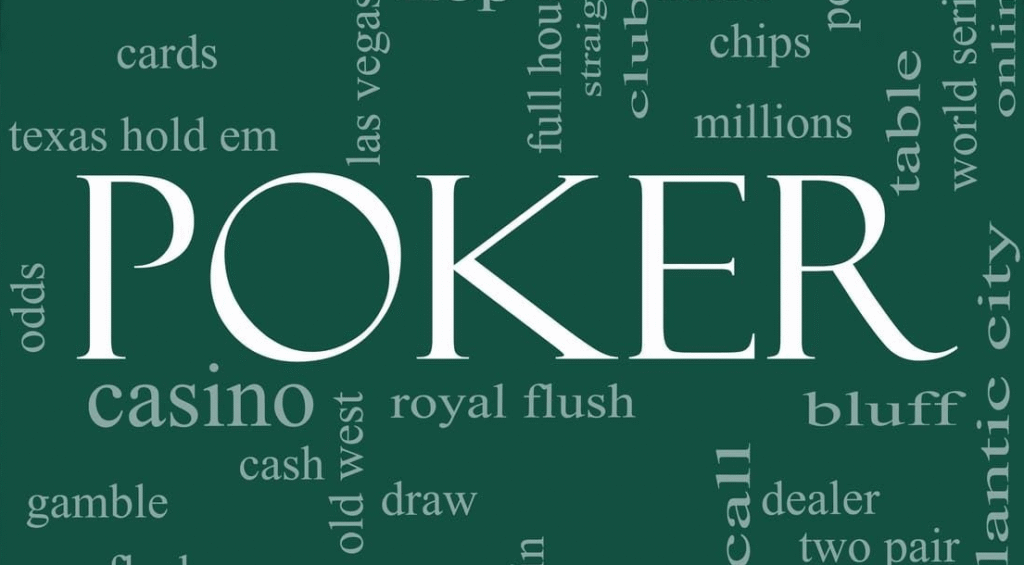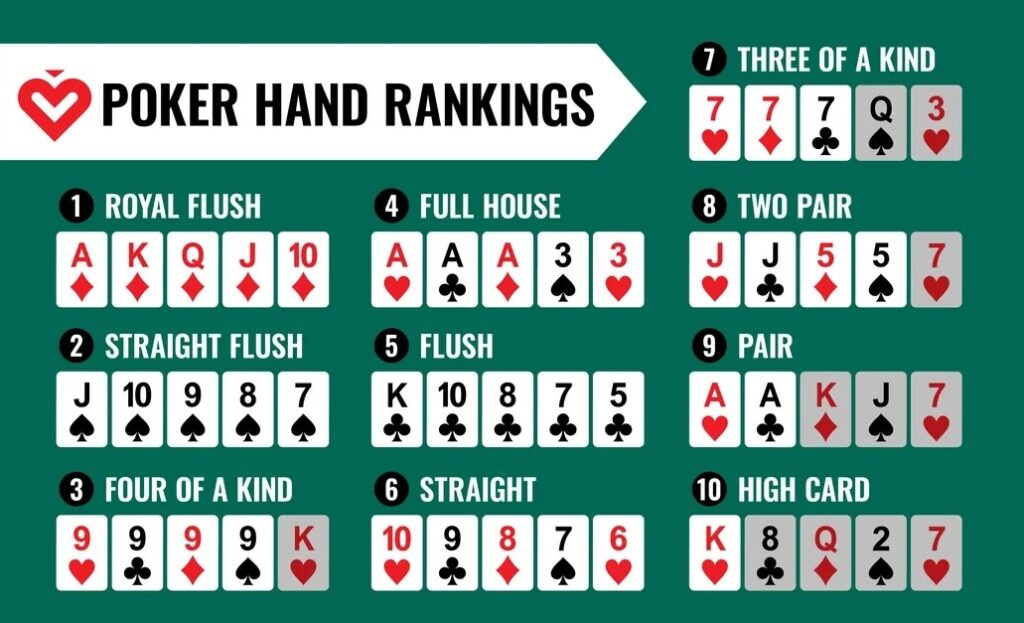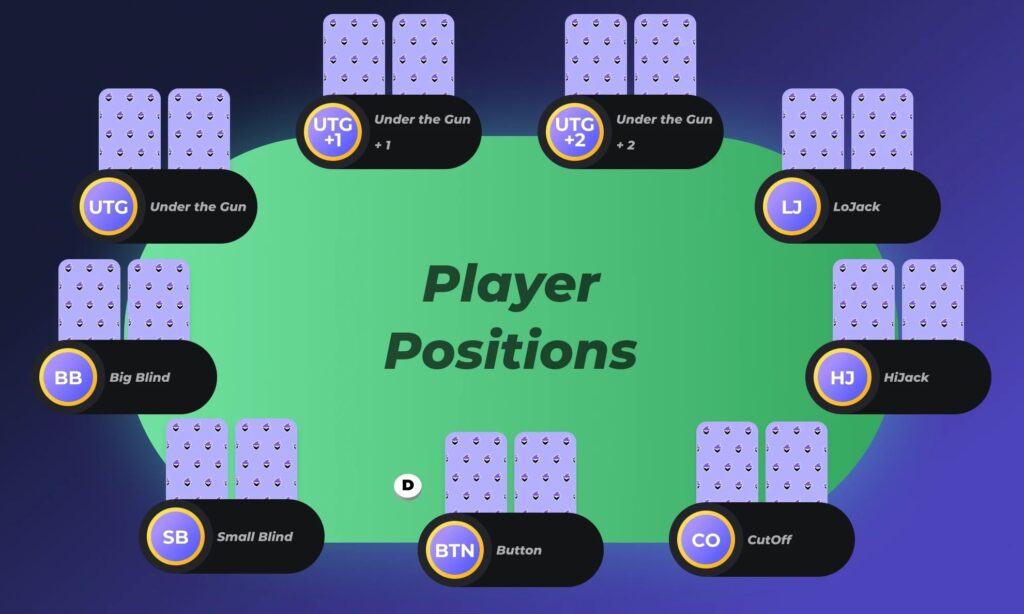Wondering how to play poker for beginners without feeling lost at the table? Poker might seem intimidating at first, with its mix of strategy, bluffing, and quick decision-making—but don’t let that stop you. The game perfectly balances skill and luck, offering excitement for everyone from casual players to seasoned pros. In this beginner-friendly guide, you’ll learn easy-to-follow Texas poker rules, essential poker basics, and simple strategies designed to build your confidence and have you winning hands faster than you thought possible.
Quick Navigation
Understanding Poker Basics: What is Poker?
Poker is more than just a card game—it’s a test of skill, strategy, and nerves. Originating centuries ago, poker evolved from simple bluffing games like the German “Pochen” and the French “Poque,” eventually becoming a staple in American culture. Among countless poker variations, Texas Hold’em is by far the most popular and beginner-friendly. Played using a standard 52-card deck, the objective is straightforward: form the highest-ranking hand (or bluff effectively) to win the pot. Players compete against each other rather than against the casino, making poker uniquely thrilling and socially engaging. It’s easy to learn yet challenging enough to keep you coming back.
Essential Poker Terms Every Beginner Must Know

Poker has its own language, but don’t worry—you don’t need to memorize a dictionary to play your first game. Understanding these essential poker terms will help you feel comfortable at the table quickly:
- Blinds: Forced bets placed by players before cards are dealt (Small Blind and Big Blind).
- Ante: A small mandatory bet all players make before a hand begins in certain poker games.
- Flop: The first three community cards dealt face-up for all players to use.
- Turn: The fourth community card dealt face-up.
- River: The fifth and final community card dealt face-up.
- Fold: To discard your hand, forfeiting your chance to win the current pot.
- Check: Passing the betting action without placing a bet (only allowed if no bets have been placed).
- Call: Matching another player’s bet to continue playing the hand.
- Raise: Increasing the size of the current bet, forcing other players to match or fold.
- Pot: The total amount of money wagered during a hand, awarded to the winner.
- Showdown: The final step where remaining players reveal their cards to determine the winner.
- Bluffing: Betting or raising with a weak hand to trick opponents into folding better hands.
Familiarize yourself with these key poker terms, and you’ll quickly feel confident enough to join the action at any table.
Texas Poker Rules: How a Hand is Played
If you’re learning how to play poker for beginners, start with Texas Hold’em—the most widely played and easiest to grasp variant. Here’s how a typical hand unfolds:
➤ 1. The Deal
- Each player is dealt two private cards (hole cards) face-down.
- The player to the left of the dealer posts the Small Blind, and the next posts the Big Blind—these are forced bets that start the action.
➤ 2. The First Betting Round (Pre-Flop)
- Starting with the player to the left of the Big Blind, players can fold, call, or raise based on their two private cards.
➤ 3. The Flop
- The dealer lays out three community cards face-up.
- Players now have five total cards (their two hole cards + the three community cards) to consider forming a strong hand.
- Another round of betting follows.
➤ 4. The Turn
- A fourth community card is revealed.
- A third round of betting takes place.
➤ 5. The River
- The fifth and final community card is dealt.
- One last betting round occurs.
➤ 6. The Showdown
- Any remaining players reveal their hands.
- The best five-card hand wins the pot. If all but one player folds before the showdown, the last remaining player wins automatically—no need to show their cards.
Poker hands are built using any combination of the two hole cards and the five community cards. You can use both, one, or none of your hole cards to form the best hand.
This structured yet flexible format makes Texas Hold’em ideal for new players—it’s easy to follow and loaded with strategy opportunities.
Poker Hand Rankings Explained Simply

No matter how confident you feel, you won’t get far unless you know which hands beat which. In Texas Hold’em, the best five-card hand wins the pot. Here’s a quick rundown of the rankings—from strongest to weakest:
1. Royal Flush
A, K, Q, J, 10 of the same suit
The rarest and strongest hand in poker.
2. Straight Flush
Five consecutive cards of the same suit (e.g., 9♦, 8♦, 7♦, 6♦, 5♦)
Second only to the royal flush.
3. Four of a Kind
Four cards of the same rank (e.g., A♠, A♦, A♥, A♣ + any fifth card)
4. Full House
Three of a kind plus a pair (e.g., 10♥, 10♠, 10♦, 4♠, 4♣)
5. Flush
Any five cards of the same suit (e.g., K♣, J♣, 9♣, 5♣, 2♣)
Not in numerical sequence.
6. Straight
Five cards in sequence but of different suits (e.g., 8♣, 7♠, 6♦, 5♥, 4♠)
7. Three of a Kind
Three cards of the same rank (e.g., Q♠, Q♦, Q♥ + any two other cards)
8. Two Pair
Two different pairs (e.g., J♣, J♦, 6♠, 6♣ + one extra card)
9. One Pair
Two cards of the same rank (e.g., 9♥, 9♠ + three other cards)
10. High Card
No pair, no sequence, no flush
If no one has a better hand, the player with the highest card wins.
📝 Tip for beginners: Print out or save a screenshot of this list when you’re starting out. Most online poker platforms and apps also provide a hand ranking guide for reference.
Best Poker Starting Hands for Beginners
In Texas Hold’em, not all hands are worth playing. One of the smartest things you can do as a beginner is learn which starting hands to play and which to fold. This helps you avoid early mistakes and puts you in a stronger position right from the start.
Here are the top 5 “premium” starting hands you should always consider playing:
- AA (Pocket Aces) – The best possible starting hand.
- KK (Pocket Kings) – Only beat by AA pre-flop.
- QQ (Pocket Queens) – Strong but slightly more vulnerable.
- AK suited – Excellent potential for top pair or a flush/straight.
- JJ (Pocket Jacks) – A solid hand, but tricky if overcards show up.
Other Strong Hands Worth Playing:
- TT, 99 (Pocket Tens or Nines)
- AQ, AJ (especially suited)
- KQ, KJ (suited only)
- Suited connectors like 9♠8♠ or 7♥6♥ – Great for potential straights or flushes.
Hands to Avoid:
- Anything like 7♣2♦, J♣4♠, or 9♦3♥ — these are commonly referred to as trash hands. They’re unsuited, unconnected, and offer very little upside.
🎯 Beginner tip: You don’t need to play every hand. In fact, most pros fold 70–80% of hands before the flop. Waiting for better starting cards increases your odds of winning—and avoids getting trapped in costly hands.
Betting Basics: How & When to Bet in Poker
Betting is where the real game begins. In poker, your betting decisions aren’t just about the cards—they’re about strategy, timing, and reading the table.
🃏 The 5 Basic Betting Actions
- Fold: You give up your cards and forfeit the hand.
- Check: Pass the action to the next player without betting (only allowed if no one has bet yet).
- Call: Match the current bet to stay in the hand.
- Bet: Place chips into the pot if no one has bet yet.
- Raise: Increase the current bet, forcing others to match or fold.
💰 When Should You Bet or Raise?
- You have a strong hand: Protect it and build the pot.
- You want to bluff: Make opponents with weak hands fold.
- To gain information: A bet can reveal how confident your opponents are.
⚖️ When Should You Call or Check?
- You’re on a draw: Waiting for one more card to complete a strong hand.
- You want to stay in the game without committing more chips.
- You suspect a bluff but don’t have a strong hand.
🧠 Beginner Betting Tips
- Avoid calling too often—it’s passive and rarely wins pots.
- Don’t bluff every hand. It works best when your opponents believe you’re capable of having a strong hand.
- Use consistent bet sizing. A wildly different bet can reveal how strong or weak your hand is.
📚 Want to manage your betting more effectively? Check out our guide to setting a gambling budget — a must-read for beginners who want to play smart.
Understanding Table Positions & Their Importance

One of the most overlooked concepts by beginners is table position—but it’s actually one of the most powerful factors in poker strategy. Your position at the table determines when you act during a hand, which directly impacts your decision-making advantage.
📍 Types of Table Positions (Full Ring – 9 Players)
Let’s break the table into five core zones:
🟥 Early Position (EP)
- UTG (Under the Gun) – First to act pre-flop (right after the Big Blind).
- UTG+1 – Next in line after UTG.
- These players must act with very little information, so play should be tight and conservative.
🟧 Middle Position (MP)
- LoJack (LJ) – Comes after UTG+1.
- HiJack (HJ) – Follows the LoJack.
- These spots offer a bit more flexibility. You’ve seen more player actions, so you can start loosening your range slightly.
🟨 Late Position (LP)
- Cutoff (CO) – Right before the dealer.
- Button (BTN) – Dealer position; acts last post-flop and holds the most power.
- Late position lets you gather the most info and control the hand flow.
🟦 Blinds
- Small Blind (SB) – Posts half the minimum bet; acts second-to-last pre-flop but first post-flop.
- Big Blind (BB) – Posts full blind; last to act pre-flop but first to act post-flop.
🧠 Why Does Position Matter?
- Early position = tighter play. You’re first to act with less info, so stick to premium hands.
- Middle position = adjust based on table dynamics. Hands can open up a bit more.
- Late position = power play. You’ve seen everyone else act, giving you more control to bluff, steal pots, or apply pressure.
🎯 Pro Tip: As a beginner, aim to play tight in early position, balanced in middle, and confidently wider in late. Position can often matter more than your actual cards.
Common Poker Mistakes Beginners Should Avoid
Learning how to play poker for beginners also means learning what not to do. Avoiding these common pitfalls can save you money and headaches—especially early on.
❌ 1. Playing Too Many Hands
New players often feel the need to stay active. But poker isn’t about playing every hand—it’s about choosing the right hands to play. Be selective.
❌ 2. Bluffing Too Often
Bluffing is overrated in beginner circles. It’s a tool, not a strategy. Overuse it, and you’ll burn through chips fast—especially if opponents catch on.
❌ 3. Ignoring Position
Acting early with weak hands? That’s a recipe for disaster. Position determines how much information you have—use it wisely.
❌ 4. Calling Too Much
Calling is passive. If you’re always calling instead of betting or raising, you’re not putting pressure on opponents—and you’ll miss chances to win pots outright.
❌ 5. Chasing Every Draw
Just because you might hit a flush or straight doesn’t mean you should pay anything to get there. Know the odds, and don’t chase every time.
❌ 6. Letting Emotions Take Over (Going on Tilt)
Lost a big hand? Don’t try to “win it back” right away. Emotional play leads to poor decisions. Take a breath—or a break.
❌ 7. No Bankroll Discipline
Betting too big too soon can wipe you out. Always play within your limits.
💡 Start with this online gambling budget guide to avoid overspending.
Simple Poker Strategies to Start Winning Early
You don’t need advanced math or decades of experience to win your first poker game. As a beginner, success comes down to basic strategy, discipline, and observation. Here are some practical tactics to help you start strong:
✅ 1. Play Tight, But Aggressive
- Only play strong starting hands—especially in early position.
- When you do play, bet with confidence. Limping (just calling) invites too many opponents into the pot.
- Tight-aggressive play helps you control risk while still building big pots when you’re ahead.
✅ 2. Watch the Other Players
- Is someone bluffing often? Betting small with strong hands?
- Pay attention to their patterns—bet sizing, timing, and reactions.
- The more you observe, the easier it becomes to spot tells and tendencies.
✅ 3. Use Continuation Bets Wisely
- If you raised pre-flop, consider following up with a small post-flop bet—even if you didn’t hit anything.
- This “c-bet” puts pressure on opponents and often wins the pot when they miss the board.
✅ 4. Think in Ranges, Not Exact Hands
- Don’t try to guess one exact hand your opponent has.
- Instead, think about a range of possible hands based on how they’ve played.
✅ 5. Don’t Get Married to a Hand
- Even pocket aces can lose. If the board is dangerous and the betting gets wild, be willing to let go.
✅ 6. Stick to Your Bankroll Strategy
- Always play within limits. Never bet more than you’re comfortable losing.
- Explore beginner-friendly platforms like sweepstakes casinos that let you practice risk-free.
🎯 Final Tip: You won’t win every hand. And that’s okay. The key is to maximize the hands you win—and minimize your losses on the ones you don’t.
Taking Poker Skills to Sweepstakes Casinos
Once you’re confident with the basics, it’s time to test your skills—but you don’t have to risk real money right away. Sweepstakes casinos offer a perfect bridge between learning and live play.
🏆 What Are Sweepstakes Casinos?
Unlike traditional online casinos, sweepstakes casinos let you play with virtual currencies—often for free—and still give you a chance to win real cash prizes through sweepstakes-based systems. They’re legal in most U.S. states and don’t require you to gamble with real money to get started.
🔗 Want the full breakdown? Here’s our complete guide: What are Sweepstakes Casinos?
🃏 Can You Play Poker at Sweepstakes Casinos?
Many of the top sweepstakes casinos offer:
- Poker-style games
- Tournaments with leaderboards
- Multi-player rooms with casual competition
These platforms are a great place to:
- Practice hand rankings
- Test your bluffing and betting skills
- Play at your own pace without financial pressure
💡 Recommended for Beginners:
Start with platforms from our handpicked list of the best sweepstakes casinos to find beginner-friendly options that include poker-style gameplay and free-entry tournaments.
FAQ: How to Play Poker for Beginners
What is the easiest poker game for beginners?
Texas Hold’em is widely considered the easiest poker game for beginners. It’s simple to learn, highly popular, and has straightforward rules. Most free poker apps and sweepstakes casinos also offer Texas Hold’em as the default option.
Can you play poker online for free?
Yes! You can play poker for free using virtual chips at social platforms or sweepstakes casinos, where no real-money deposit is required. These are ideal for practicing before you move to higher-stakes tables.
What poker hand wins the most?
Statistically, pocket pairs like AA, KK, and QQ win the most pre-flop. Over time, premium hands combined with good strategy—such as AK suited or JJ—have the highest win rates.
How many cards do you get in poker?
In Texas Hold’em, each player receives 2 private cards, and shares 5 community cards that are dealt face-up on the table. The best 5-card combination wins the pot.
What does it mean to “check” in poker?
“Checking” means you’re passing your turn without betting, but only if no one before you has placed a bet. It’s often used to control the pot or keep your intentions hidden.
How do you bet in poker for beginners?
Start small. Use consistent bet sizes and only bet when you have strong hands—or a good reason to bluff. As a beginner, bet with purpose, not just because it’s your turn. If unsure, start with checking or folding until you get more confident.
Is bluffing a must in poker?
No, especially not for beginners. Bluffing is an advanced tool that requires experience and timing. Early on, focus more on solid hands and good position rather than trying to outwit everyone.
Where can I learn more about safe and smart gambling?
Check out our full Online Gambling Guides to explore topics like bankroll management, beginner-friendly casinos, and strategy tips tailored to your skill level.

